When the freshness starts in the ownership suite — or his courtside seat, as may be the case here, it is truly a new beginning.
After a determined and gutty yet ultimately unsuccessful run in the 2014 postseason, the Los Angeles Clippers entered the offseason with a ton of questions regarding the future of their franchise.
Although the Donald Sterling story died down a bit nationally a week or so after the initial TMZ audiotapes were released in late April, the saga was not yet dead and buried until a court decided whether or not his wife had permission to sell the team without a signoff from her allegedly senile husband.
Despite Commissioner Adam Silver’s lifetime ban, many felt that Sterling’s absence at games or team events wasn’t enough. There were rumblings of players willing to sit out the season, and some thought coach Doc Rivers was ready to look for other jobs if Sterling were still in charge and – most importantly – still receiving checks on the team’s behalf at the start of the 2014-15 season.
To the delight of Clippers fans everywhere, Shelly Sterling was given the OK to sell the team. Although the fact that she still remains with the organization in a public capacity is somewhat embarrassing – given her own history of racially insensitive actions – she and her husband no longer have any control of the team. The arrival of overtly enthusiastic new owner Steve Ballmer has helped usher in a new era of positivity and possibility for the Clippers, which means a lot for one of America’s most downtrodden franchises.
Thus, the outlook for the Clippers this season is a rosy one, even if they remain in a loaded Western Conference that was so good last season that LA’s reward for securing home court advantage was matching up with an extremely talented Warriors team in the first round. The core of this team is back, and after a year under Rivers’ leadership, there is little reason to believe that the Clippers won’t be even better than they were in 2013-14, which happened to be the best season in franchise history as the Clippers finished with 57 wins and their second straight division title.
Here are five things to watch with the Clippers this season.
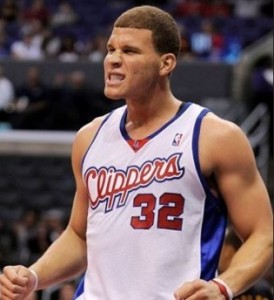 1. What’s next for Blake Griffin? The dial had slowly been turning prior to last season, but it was the 2013-14 campaign that finally brought about an end to all of the talk about Blake Griffin being a limited player. The belief that Griffin was nothing more than a dunker became popular when Griffin jumped over a Kia at the Slam Dunk Contest and picked up steam when the term “Lob City” was thrown around to describe the team. But the complete array of skills that Griffin displayed last season falls short of no one in the league outside of LeBron James.
1. What’s next for Blake Griffin? The dial had slowly been turning prior to last season, but it was the 2013-14 campaign that finally brought about an end to all of the talk about Blake Griffin being a limited player. The belief that Griffin was nothing more than a dunker became popular when Griffin jumped over a Kia at the Slam Dunk Contest and picked up steam when the term “Lob City” was thrown around to describe the team. But the complete array of skills that Griffin displayed last season falls short of no one in the league outside of LeBron James.
Griffin had a career-high PER of 23.98, averaged a career high 24.1 points and raised his free-throw percentage from 61 percent over his first three seasons to 72 percent last season. While Chris Paul missed 20 games with a shoulder injury, Griffin often carried the burden of a bona fide top option and was always up to the task. Griffin was so impressive last season that he finished third in MVP voting. Paul’s injury certainly was a factor, but this was a clear sign that the national media was beginning to sense how Griffin’s greatness.
Griffin is as diverse as any power forward in the game, possessing the ability to act as the initiator or the finisher on any play. One moment he may be pulling down a rebound and streaking up the sideline with his head up as his invasive eyes scan the floor, and the next he may be bullying somebody down in the post and banking home a nifty finish off the glass. For someone seen as a raw offensive talent coming into the league, Griffin has quickly progressed into one of the NBA’s most skilled players.
So what’s left for Griffin to master? As has been the case for the past couple of seasons, it’s his jump shot. It speaks volumes about the rest of Griffin’s game that his weakness is something he does better than the league average, but his mid-range jumper is still far from pure. Griffin wound up shooting 37.1 percent on mid-range attempts last season after shooting 35 percent in 2012-13. That may seem like a miniscule improvement, and in the grand scheme of things it probably is. But the important development last season was more about Griffin’s willingness to take the open shot.
The goal for Griffin is to make a higher percentage of those shots, but he would never get there if he wasn’t confident in his shot. Last season, he was much more confident and took those shots in rhythm rather than taking a second to think about what he had for breakfast that morning. If he can demonstrate a more consistent outside touch, there’s no telling what his ceiling is.
2. Can the offense get any better? If it ain’t broke, don’t fix it, right? Well what happens if you’re the best but you still have room for improvement? Make no mistake, if there is an end of the floor that the Clippers must improve on this season in order to be a title contender, it’s the defensive side. But there may very well be another level for the offense to reach as well.
It is a testament to the brilliance of Paul and Griffin and Rivers’ excellent system that Los Angeles finished with the most 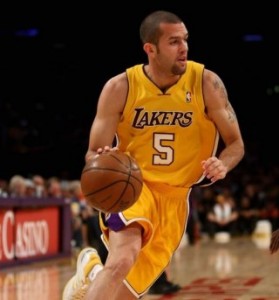 efficient offense in the league (109.4 points per 100 possessions) while ranking just 22nd in 3-point percentage (.352). In order for Dallas to crack the top three in offensive efficiency, it needed the second best 3-point shooting in the NBA, and no other good offensive team was in the bottom third of the league in outside shooting other than the Clippers.
efficient offense in the league (109.4 points per 100 possessions) while ranking just 22nd in 3-point percentage (.352). In order for Dallas to crack the top three in offensive efficiency, it needed the second best 3-point shooting in the NBA, and no other good offensive team was in the bottom third of the league in outside shooting other than the Clippers.
Despite adding solid outside shooters such as J.J. Redick and Jared Dudley last summer, nobody on the team shot over 40 percent from the arc last season. Shockingly, Darren Collison finished as the team’s second best long-distance shooter. Average or worse shooting seasons from Jamal Crawford, Dudley and Matt Barnes may have prevented LA’s offense from reaching historic levels.
Things look a bit more promising entering this season. Despite losing Collison, the Clippers added LA native Jordan Farmar, who shot 44 percent from three in 41 games for the Lakers last season and is at 38 percent for his career. First-round pick C.J. Wilcox shot 39 percent from deep during his four years at Washington. If second year forward Reggie Bullock can rediscover the shooting stroke that landed him in the NBA after an off-kilter rookie season, he may earn a spot in the rotation.
Although 3-point shooting is most associated with wing players, big man Spencer Hawes was easily the most important offseason addition. The Clippers already had some of the best spacing in basketball last season, so adding a 7-footer who can play at the arc while playing competent defense alongside either Griffin or DeAndre Jordan is almost unfair. Hawes shot 42 from three for the Cavaliers and 76ers last season while attempting a career high four per game. If he can replicate anything close to that, the Clippers may be ready to rewrite the offensive record books.
RELATED: Clippers salaries and analysis
3. How will Doc’s rotation look come playoff time? This is what we know: Paul, Griffin, Jordan and Hawes are going to play the majority if not all of the critical minutes at their respective positions. From there, though, things are up in the air. In some ways, that can be a positive thing since Rivers has so many options that he should be able to rely on to produce. That 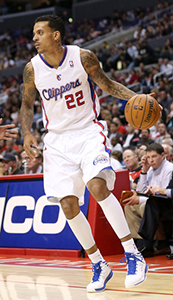 said, come playoff time, not having a certain group of seven or eight guys that you know for sure will come through is a big issue.
said, come playoff time, not having a certain group of seven or eight guys that you know for sure will come through is a big issue.
Redick is next on the list in terms of reliability as his mix of shooting, excellent off-ball movement, smart passing and solid defense is a perfect fit for Rivers’ flowing system. But Rivers was strangely reluctant to throw him out there for more than 30 minutes in the postseason. Perhaps this was related to back issues that Redick battled to be able to play in the playoffs, but I’m not sure if Rivers feels Redick brings enough shot creation to the floor to give him a starter’s helping of minutes.
Barnes is projected to start at small forward, but his position is the least secure. Barnes is still a workable cog in LA’s offense as a whip smart cutter that meshes well with Paul and Griffin’s tremendous passing and a streaky 3-point shooter that can give you great production for 10-15 games in a row. But with so many wings on the roster, there’s a chance he may end up being traded during the season, perhaps in a deal for New York’s Iman Shumpert as has been rumored a few times over the past year.
Behind Barnes there are a number of seemingly solid options whose roles have yet to be determined. You have the young guns in Bullock and Wilcox, who will probably need to blow people away in training camp to earn any real time this season. There is Australian import Joe Ingles, who brings a solid combination of playmaking and scoring from the wing and a good amount of experience playing overseas for his national team and some top European clubs. There is journeyman Chris Douglas-Roberts, whose last stint was a productive one as a quality rotation player for the Charlotte Bobcats. Finally, you have Hedo Turkoglu, who is back after 38 meh games in the second half of last season.
What the rotation looks like in the postseason depends on how the situation with Barnes plays out. If he winds up staying, the Clippers will have to hope that the addition of Hawes and the emergence of one of their many back-up wing players is enough to move them up one more notch from last season.
4. Is DeAndre Jordan the defender that Doc Rivers thinks he is? Nobody outside of the Clippers’ locker room takes Rivers seriously when he says that Jordan reminds him of Bill Russell, but that’s not why he says those things. They are directed at Jordan, who was in need of a few pick-me-ups after being continually demoralized during Vinny Del Negro’s reign. Reviving Jordan’s self-confidence has been a clear priority for Rivers, and he backed up his words with the way he managed his team; Jordan averaged a career high 35 minutes last season, an eight-minute uptick over his previous career high. Rather than sitting Jordan late in games, Rivers rode with him, refusing to punish him for his poor free-throw shooting. The results 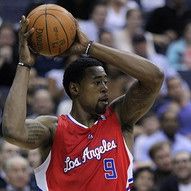 were extremely positive.
were extremely positive.
Jordan was the true anchor of the defense, leading the league in rebounding (13.6) and establishing a career high rebound rate (21.6%). Jordan also led the league in field goal percentage (.676) and was an incredibly reliable finisher at the rim when teams would commit too many bodies to the plethora of pick-and-rolls. Jordan has always been an intimidating shot-blocker, but the finer details of his defense have steadily improved over the past year or so, and that is the real key when determining a player’s defensive value.
There are still lapses, though, and occasionally Jordan can be pulled away from the rim and lulled to sleep by teams that move the ball well. Part of this has to do with the Clippers not being totally sound defensively on the perimeter; among centers with at least 50 blocks last season, only Hawes and Robin Lopez – who played for some bad defensive teams – faced more shots at the rim per game. (Jordan faced 10.2 shots at the rim per game per NBA.com’s SportVU data). But Jordan’s attention to detail when defending the pick-and-roll, both as the active and the help defender, will need to improve for him to be a truly great defender worthy of Defensive Player of the Year.
5. When all is said and done, is this team a title contender? This is such a tough question, partly because I’m not sure how good the Clippers were last season relative to the other top teams in the West. Game 5 of conference semifinals against the Thunder may have concluded with the most unbelievable final minute in playoff history as the Clippers saw a seven-point 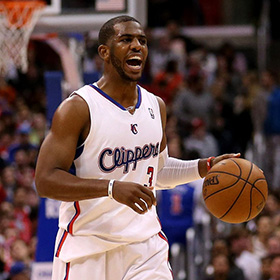 lead evaporate. The officiating during that span was suspect to say the least, and Paul made a very uncharacteristic mistake handling the ball, which sparked Oklahoma City’s miraculous comeback. Had the Clippers won, they would have had a great chance to close out the series. Although I think the Spurs would have had their way with anybody last season, beating OKC to get to the conference finals would have been a massive statement entering this season.
lead evaporate. The officiating during that span was suspect to say the least, and Paul made a very uncharacteristic mistake handling the ball, which sparked Oklahoma City’s miraculous comeback. Had the Clippers won, they would have had a great chance to close out the series. Although I think the Spurs would have had their way with anybody last season, beating OKC to get to the conference finals would have been a massive statement entering this season.
The picture hasn’t changed much in the West. The Spurs brought back the band and will surely be game to defend their title. The Thunder had a surprisingly uneventful offseason but are still very good. The Warriors’ hiring of Steve Kerr should help their roster of dynamic offensive players actually play like it. The Rockets enter their second season of the Harden/Howard era although without Chandler Parsons, who moved onto the Mavericks, who could be a dangerous team now that they have Tyson Chandler back to give their defense a backbone. And I haven’t even mentioned the Grizzlies, who have given the Clippers more fits than anybody over the past few years, or the Blazers, who will likely boast one of the top offenses in the league again next season.
As anticipated as this offseason was, there was not a whole lot of major movement in the West. Neither Carmelo Anthony nor Chris Bosh joined the Rockets, the Warriors didn’t trade for Kevin Love and Eric Bledsoe is staying in Phoenix (for now). Outside of the Mavericks, the Clippers may have added the most impactful individual player of the playoff teams in the West when they signed Hawes. Given how thin LA’s front line was last season behind Griffin and Jordan and its 3-point woes mentioned earlier, getting Hawes was a massive move. If this team continues to gel under Rivers’ tutelage, particularly on the defensive end, I think the Clippers will finally earn themselves that date with the Spurs in the conference finals.
And there isn’t a better way to announce yourself as a franchise reborn than going head-to-head with one of the league’s most legendary teams with a trip to the NBA Finals on the line.
READ EVERY TEAM’S SEASON PREVIEW WITH OUR INDEX
Mark Travis is a Sports Media Major at Oklahoma State University and a contributor for ClipsNation. He founded his own website, But The Game Is On, in 2008 and also covered the past two NBA Finals for the Corpus Christi Caller-Times. You can follow him on Twitter @Mark_Travis.
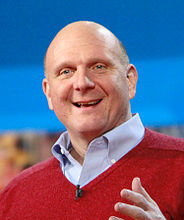
 Talk about a fresh start …
Talk about a fresh start …